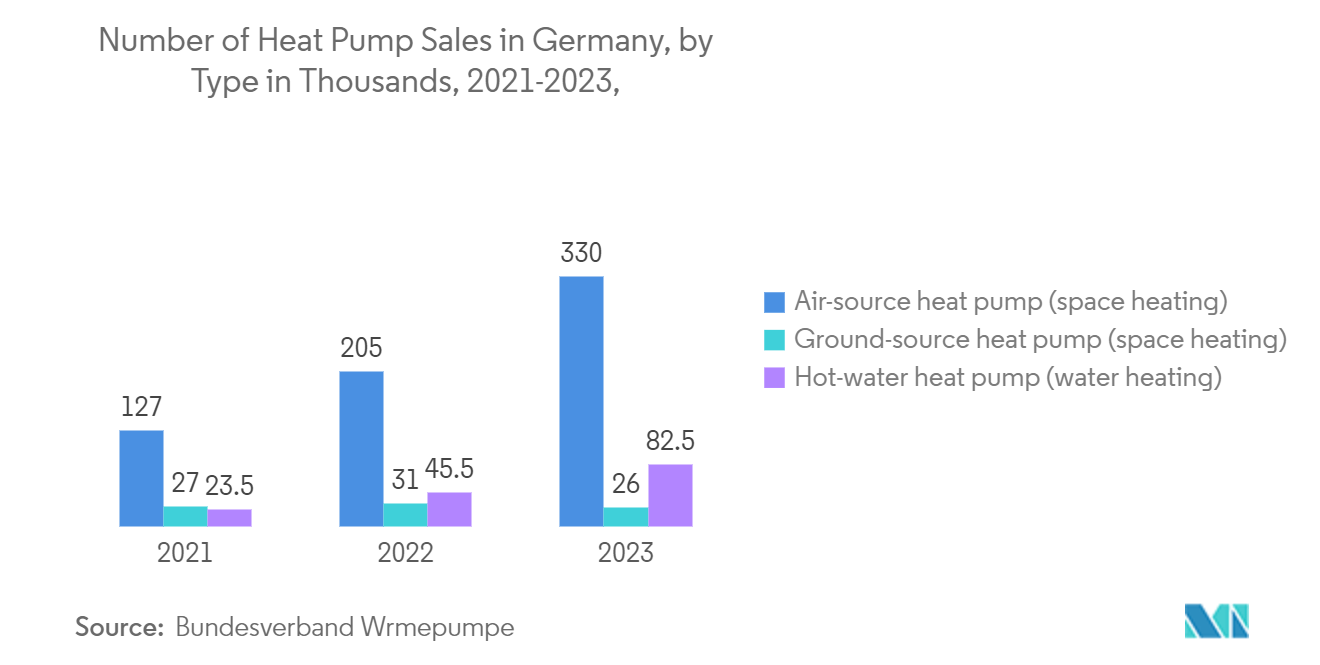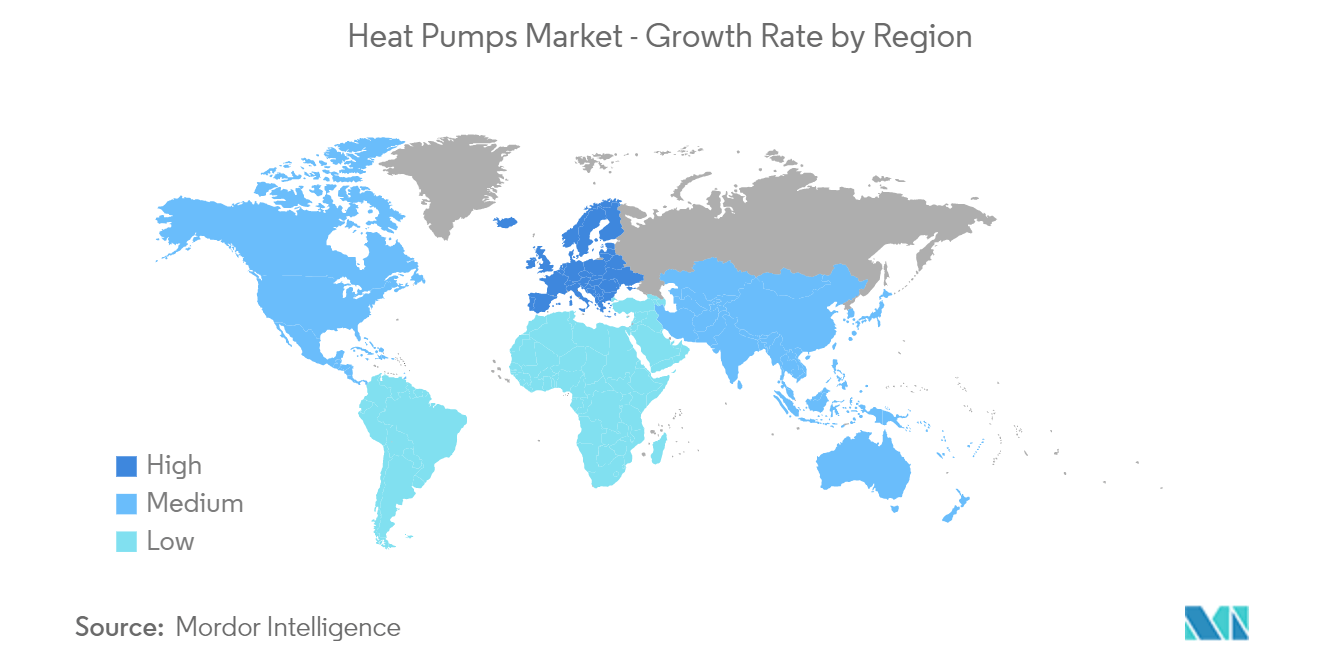Market Trends of Global Heat Pumps Industry
Residential Heat Pumps are Expected to Witness Significant Growth
- The regulations implemented in different regions aimed at promoting nearly zero energy buildings are directing residential buildings to improve energy performance through efficient energy sources, such as heat pumps. Heat pumps are often used as heat sources in single-family and terraced houses. Heat pumps are also increasingly used in apartment buildings.
- Further, the 2022 Building Energy Efficiency Standards (Energy Code) adopted by the California Energy Commission (CEC), which goes into effect January 1, 2023, introduced some new requirements for buildings in California, United States. According to the 2022 Energy Code, new single-family homes must have electric heat pumps for water and air. Electric heat pumps for space heating are also needed in all new multi-family residences.
- Vendors are also focusing on residential decarbonizing to decrease CO2 emissions. For instance, in recent years, Daikin announced a four-step plan to transform residential heating and cooling. According to the company, the European building stock is responsible for approximately 36 % of all CO2 emissions in the European Union. Therefore, heat pumps are being deployed in new residential constructions, thus, driving the need for heat pumps in the region.
- Residential construction has seen a considerable boost in many markets despite the impact of COVID-19, which also supports market growth. For instance, the German construction sector was expected to bring in sales of EUR 151 billion in 2022, up 5.5% from 2021, according to figures from the country's two leading construction associations, ZDB and HDB. The growth projection was anticipated to be led by the strong performance of the country's residential construction sector, which has remained resilient throughout the pandemic.
- Further, in April 2022, Daikin announced its support for the REPowerEU, which has set a goal to boost the rollout of heat pumps from 10 million units in 2027 to 30 million units in 2030. This is further associated with residential decarbonization as the movement can help the European Union achieve the residential sector's decarbonization goals by 2050.
- As stated by Bundesverband Wärmepumpe, the majority of heat pumps purchased in Germany in 2023 were aerothermal, meaning they draw energy from the external air. Moreover, the quantity of heat pumps being utilized for heating household water is rapidly rising.

Asia Pacific Expected to Dominate the Market
- China is one of the significant markets for heat pumps, owing to the government's policies to support more energy-efficient infrastructure in the country, thereby augmenting the market growth. China's vast geographic area is officially divided into five primary climate zones with different thermal design requirements. Heating solutions for these regions can be tailor-made to meet the huge market opportunities.
- In Japan, heat pumps are well-known products in private and commercial settings. Various types of industries have also embraced them. This development began several decades ago and has been further pushed by energy conservation measures. These were formulated by the Agency for Natural Resources and Energy, stipulating energy conservation of 50.3 million m3 crude oil equivalent between 2013 and 2030. Such instances are likely to boost the demand for heat pumps in the country.
- Applications of heat pumps in hotels, malls, theatres, etc., are gradually gaining traction in India. Moreover, a tremendous amount of solar energy is available in the country. According to the Ministry of New and Renewable Energy, solar power installed capacity reached around 61.97 GW as of 30th November 2022. The country stood 4th in solar PV deployment across the globe in the previous year. The system combination of solar thermal collectors and heat pumps can be an attractive option for increasing renewable energy usage worldwide for heating and domestic hot water preparation.
- In South Korea, government initiatives concerning energy-efficient solutions are driving the market growth. For instance, a study carried out by Korea's Ministry of the Environment on the Hyundai Kona Electric, and Kia Niro EV found that the heat pump significantly reduced battery consumption in cold conditions.
- In Australia, the Green Building Council of Australia (GBCA) launched the Green Star certification in 2003. Additionally, the Australian Government is focused on a 26-28% reduction in greenhouse gas emissions from 2005 levels by 2030. Such instances demonstrate a significant market growth opportunity over the forecast period.
- The countries considered under the rest of Asia-Pacific include Indonesia, Singapore, and Thailand. Indonesia is one of the leading geothermal energy powers in the world and has set ambitions to grow the sector further as the country embraces renewable energy sources. For instance, During the 8th Indonesia International Geothermal Convention & Exhibition (IIGCE) 2022, the Indonesian government announced that, through the General Plan for the Provision of Electricity, it had set a geothermal development target of 3.3 GW installed capacity by 2030. Such initiatives are likely to create a positive outlook for the studied market.


